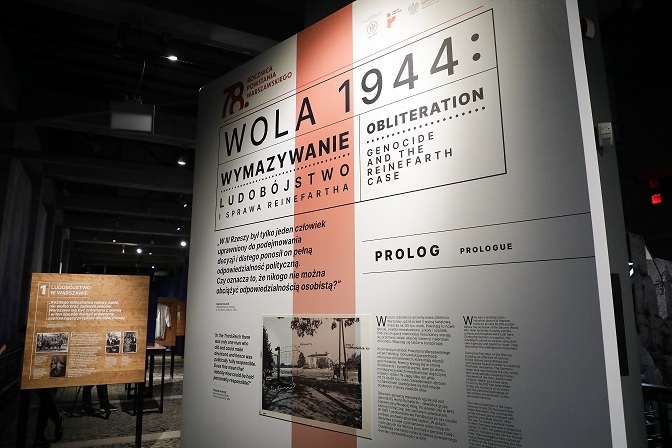The Warsaw Uprising Museum is hosting the exhibition ‘Wola 1944: Erasing. Genocide and the Reinefarth Case’. In the first days of the Warsaw Uprising, a crime with the hallmarks of genocide took place in Wola. In the period from 5 to 7 August 1944, carrying out an order from Adolf Hitler and Heinrich Himmler, the Germans murdered between 15,000 and 60,000 people: men, women and children. The crime was committed by soldiers and policemen under the command of SS Gruppenführer Heinz Reinefarth.
The exhibition presents the history of the events from the perspective of the district’s inhabitants. It is made up of artefacts – personal belongings of the victims, as well as testimonies of survivors extracted from both television archives and contemporary oral history collections. The opening was attended by the Minister of Culture and National Heritage Piotr Gliński.
Among the photographs on display, the collection of over 30 original photographs is particularly valuable. They were taken by Hanns von Krannhals, a German historian of the Warsaw Uprising, who showed the sites of mass executions in Wola during an on-site inspection in 1962. Some of them contain handwritten sketches depicting the course of events in August 1944: the location of machine gun positions and places where the bodies of victims were collected, as well as elements of the city’s topography, which no longer existed in the 1960s.
Using a collection of more than 100 photographs from the Reinefarth investigation file from 1961 to 1967, the exhibition also tells the story of the proceedings, which eventually ended in abandonment, leaving the criminal free. After the war, Reinefarth worked as a lawyer in Germany, became mayor of Westerland on the island of Sylt and a member of the Landtag in Schleswig-Holstein. Despite many efforts, it was never possible to bring him to justice.
The organisation of the exhibition is possible thanks to Hanna Radziejowska’s many years of research and the archive programme of the Pilecki’s Institute.
Arkadiusz Słomczyński





